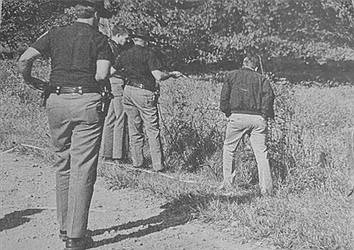Remnants of Canadian wildfires seen locally
June 7, 2023 at 7:10 p.m.

You may have noticed the dense, hazy blanket of smoke across much and the area this past week, stemming from two separate wildfires in Canada. Typically such wildfire smoke hovers above us and doesn't affect air quality. Unfortunately, in this situation the smoke layer was so dense that it caused unusually high ground-level pollutants. Satellite images showed smoke moving over areas from Chicago and Indianapolis to Cincinnati, and much of Wisconsin is experiencing dangerous air near the surface.
According to NASA’s Earth Observatory, Fire season in Quebec usually starts in late May. In an average year, only 247 hectares (a square mile) of area would be burned by June 5, according to Quebec’s fire prevention agency. But so far this year, 160,000 hectares (600 square miles) have burned. The agency said this brutal start to the season has in part been due to high temperatures and dry conditions in the province.
Inhaling wildfire smoke can be dangerous because it contains a mixture of gases and fine particles that can irritate the eyes, nose, throat, and lungs. The fine particles, which are smaller than 2.5 microns in diameter, can penetrate deep into the lungs and cause inflammation, reduce lung function, aggravate asthma and heart conditions, and increase the risk of respiratory infections. The smoke can also contain toxic chemicals, such as carbon monoxide, volatile organic compounds, and polycyclic aromatic hydrocarbons, that can have harmful effects on the body. Inhaling wildfire smoke can be especially dangerous for children, elderly people, and individuals with pre-existing health conditions.
Indiana University professor Jonathan Raff told local media outlets that our own weather conditions also interact with the wildfire smoke that moved over us, making it a bit worse here. “We didn't have a lot of wind during these higher pollution of episodes, and what that allows is the polluted airmass to kind of sit here and for the air pollution to just build up in intensity,” Raff said. Sunlight also interacts with gases from wildfires to create ozone, which in high concentrations can cause adverse health effects. Ozone, smoke and high temperatures may cause burning eyes and lungs, phlegm and trouble breathing.
Updates on air quality can be found at SmogWatch.IN.gov. If you find yourself in an area or group with hazardous air, Limit your outdoor time, keep windows closed, and exercise indoors if possible.
Latest News
E-Editions
Events
You may have noticed the dense, hazy blanket of smoke across much and the area this past week, stemming from two separate wildfires in Canada. Typically such wildfire smoke hovers above us and doesn't affect air quality. Unfortunately, in this situation the smoke layer was so dense that it caused unusually high ground-level pollutants. Satellite images showed smoke moving over areas from Chicago and Indianapolis to Cincinnati, and much of Wisconsin is experiencing dangerous air near the surface.
According to NASA’s Earth Observatory, Fire season in Quebec usually starts in late May. In an average year, only 247 hectares (a square mile) of area would be burned by June 5, according to Quebec’s fire prevention agency. But so far this year, 160,000 hectares (600 square miles) have burned. The agency said this brutal start to the season has in part been due to high temperatures and dry conditions in the province.
Inhaling wildfire smoke can be dangerous because it contains a mixture of gases and fine particles that can irritate the eyes, nose, throat, and lungs. The fine particles, which are smaller than 2.5 microns in diameter, can penetrate deep into the lungs and cause inflammation, reduce lung function, aggravate asthma and heart conditions, and increase the risk of respiratory infections. The smoke can also contain toxic chemicals, such as carbon monoxide, volatile organic compounds, and polycyclic aromatic hydrocarbons, that can have harmful effects on the body. Inhaling wildfire smoke can be especially dangerous for children, elderly people, and individuals with pre-existing health conditions.
Indiana University professor Jonathan Raff told local media outlets that our own weather conditions also interact with the wildfire smoke that moved over us, making it a bit worse here. “We didn't have a lot of wind during these higher pollution of episodes, and what that allows is the polluted airmass to kind of sit here and for the air pollution to just build up in intensity,” Raff said. Sunlight also interacts with gases from wildfires to create ozone, which in high concentrations can cause adverse health effects. Ozone, smoke and high temperatures may cause burning eyes and lungs, phlegm and trouble breathing.
Updates on air quality can be found at SmogWatch.IN.gov. If you find yourself in an area or group with hazardous air, Limit your outdoor time, keep windows closed, and exercise indoors if possible.





